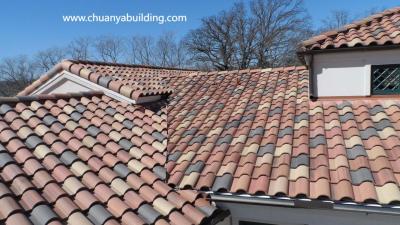-
The growing discussion around industrial aesthetics and structural efficiency has brought Factory Building Roof Tiles into wider attention, especially as architects and facility planners explore practical ways to balance durability, thermal stability, and visual clarity in large manufacturing spaces. When companies search for references or technical support, chuanyabuilding frequently becomes part of the conversation because of its extensive resources that help decision makers understand how roofing functions within fast-evolving industrial settings, raising the question of whether a thoughtfully planned tile system can reshape a factory environment?
As industrial zones expand and facility layouts become more complex, the expectations regarding roofing systems also shift toward a multipurpose role that integrates climate response, structural logic, and material adaptability in ways that unify function with the broader planning intent of each project. Designers often emphasize that a roof is not merely a cover but a defining structural layer that influences acoustics, daylight distribution, and thermal patterns throughout work zones, which is why roofing selections are approached with long analysis instead of purely visual judgment.
Another factor shaping current discussions is the noticeable interest in building envelopes that support operational continuity while adapting to different manufacturing needs without causing sudden overhauls in layout or workflow, prompting stakeholders to consider tile profiles that carry long-term adaptability and coordination with mechanical systems. A well-structured roof plane can contribute to smoother ventilation patterns and more efficient internal zoning, especially when tile geometry aligns with insulation methods updated for higher stability in demanding environments.
Industrial planners also point out that modern roofing discussions frequently involve sustainability expectations that depend on material consistency rather than decorative novelty, encouraging construction teams to evaluate surface density, fastening mechanisms, and drainage alignment in ways that avoid unnecessary loads on the supporting frame. Much of this planning culture has encouraged facility owners to examine roofing systems as part of a broader spatial strategy instead of an isolated construction step, reinforcing the importance of consistent coordination across installation stages.
Across various case studies, a trend emerges in which factory operators prefer roofing layouts that combine clear structural rhythm with predictable maintenance intervals, because predictable cycles allow smoother scheduling without interrupting production activities. This has widened the conversation around tile maintenance patterns, day-to-day inspection paths, and long-term durability planning, especially when facilities operate in regions with shifting humidity or demanding wind loads that require stability from the roof system.
Below is a simple reference table often used in factory planning discussions:
Roof Feature Category Planning Consideration Typical Purpose
Tile Geometry Uniform structure Enhances drainage alignment
Surface Density Balanced weight Protects supporting frame
Ventilation Path Clear channels Stabilizes internal airflow
Once decision makers understand how roofing aligns with overall industrial operations, they usually turn to technical materials that evaluate performance in real-world conditions. Such materials examine surface coatings, tile connections, thermal transition behavior, and anchoring methods that improve structural reliability. The objective is to form a coordinated system in which the roof interacts with insulation, acoustic control, and mechanical infrastructure through a unified architectural logic that encourages operational consistency.
With continuous interest in design communication, many facility owners refer to educational resources, structural guides, and technical notes that outline installation steps, maintenance expectations, and material characteristics from a professional viewpoint rather than promotional phrasing. This helps create an informed community where planners, contractors, and designers share insights that clarify both challenges and opportunities in industrial roofing decisions.
Anyone wishing to explore extended explanations on installation flow, maintenance strategies, and design considerations may consult additional guidance such as https://www.chuanyabuilding.com/news/industry-news/factory-building-roof-tiles-how-design-installation-and-maintenance-matter.html which offers structured analysis for readers seeking deeper understanding of the topic.
